
Coldean - Bevendean History Project

The Development of South Coldean

Coldean was part of Stanmer and was purchased by Sir Henry Pelham in 1713. Sir Henry had the grounds landscaped and built Stanmer House.
In 1776, the Pelham family acquired Falmer manor and the two were combined and later known as the Chichester Estate, the Lord of the Manor received the title Earl of Chichester in 1801.
Coldean was part of Stanmer and was purchased by Sir Henry Pelham in 1713. Sir Henry had the grounds landscaped and built Stanmer House.
In 1776, the Pelham family acquired Falmer manor and the two were combined and later known as the Chichester Estate, the Lord of the Manor received the title Earl of Chichester in 1801.
Coldean in the Eighteenth Century
A map drawn in 1799 by William Figg shows the Menagerie farm at Coldean, later this was simply referred to as Coldean farm.
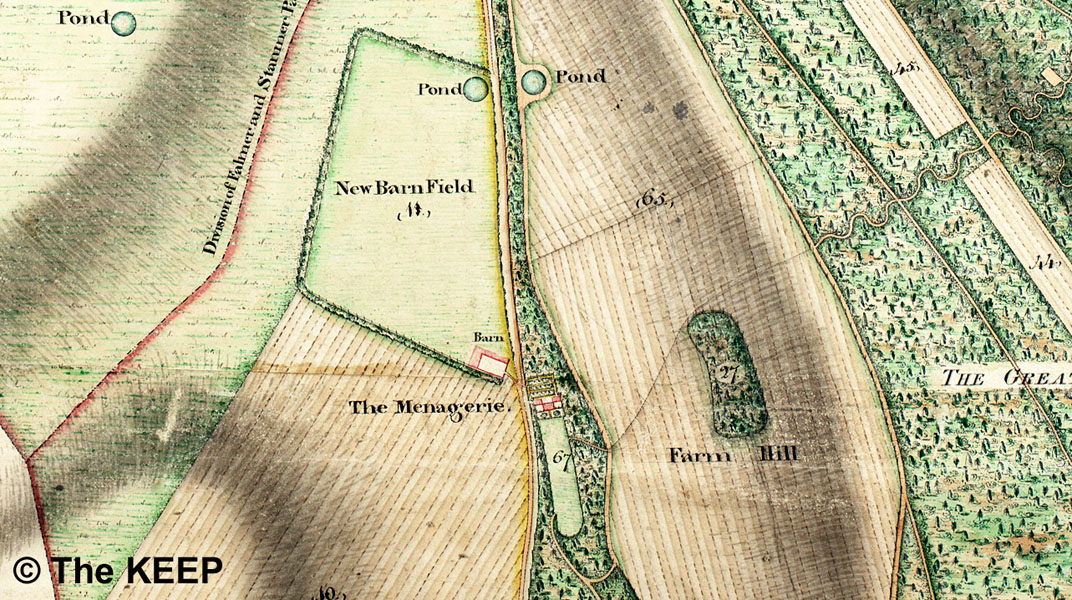
The map is from the Keep Archives © East Sussex Records Office
The old cottage, seen below, was originally a barn, built about 1740.
The brick front and Georgian doorway were later additions, and on the plaque above the door was the date 1784, and initials T.A.P.
These stood for Thomas Pelham and his wife Anne, who lived in Stanmer House.
Their favourite walk was from the house, via
a path leading past the monument to Frederick Frankland (Anne’s
father), over Farm Hill and down to this cottage, which was the home of
their pet dogs and other animals, hence the name – menagerie.A map drawn in 1799 by William Figg shows the Menagerie farm at Coldean, later this was simply referred to as Coldean farm.

The map is from the Keep Archives © East Sussex Records Office
The old cottage, seen below, was originally a barn, built about 1740.
The brick front and Georgian doorway were later additions, and on the plaque above the door was the date 1784, and initials T.A.P.
These stood for Thomas Pelham and his wife Anne, who lived in Stanmer House.
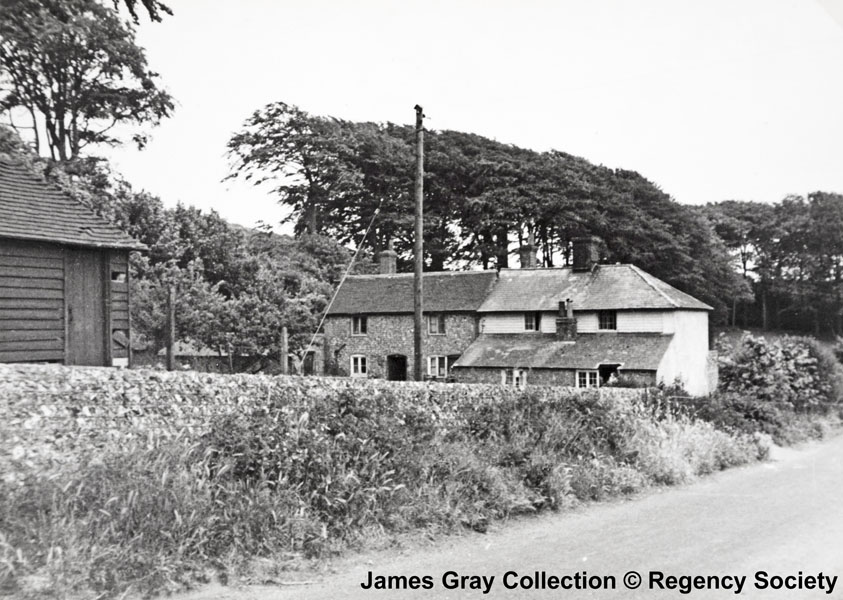
The half-timbered house adjoining was added about 1830. The photographs were taken in 1950, and the houses were demolished in December 1955.
The picture below is of three fine old flint cottages, occupied for many years by workers on Coldean Farm. They were demolished in 1960, to make way for the old people’s flats which occupy the site today.
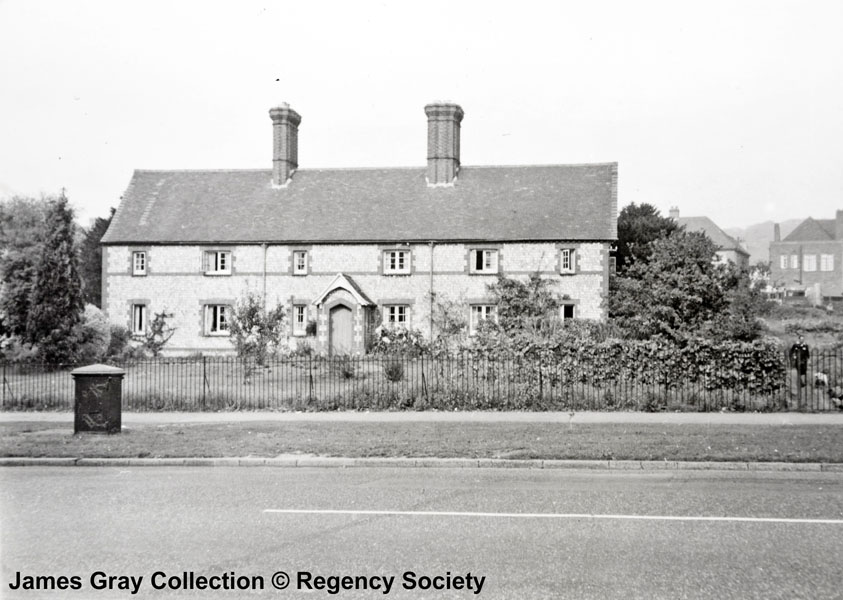
The Cottages were photographed in 1954.
Ordnance survey maps from 1875 show both the menagerie farm, barns and cottages halfway up Coldean Lane and a few houses at the bottom of Coldean Lane adjacent to the Lewes road.
There were several more cottages built at the bottom of Coldean Lane adjacent to the Lewes Road probably in the 1700s for farm or estate workers to living in.
In the 1930s Coldean Lane was just a country lane some distance away from Brighton. It served the dual purpose of linking the Ditchling Road and Lewes Road and leading to Coldean Farm which was situated midway between these two roads. The photograph below shows Coldean Lane as it was before improvements were made. This view shows the junction with Lewes Road. You can see the old farm cottages and traces of an earlier slight widening. At this time the area lay outside the municipal boundaries and it was not until 1952 that it was absorbed into the Brighton borough. With the completion of the estate and school, together with increasing traffic and the use of buses made widening of the narrow country lane a necessity and in 1954 it was decided to widen Coldean Lane throughout.
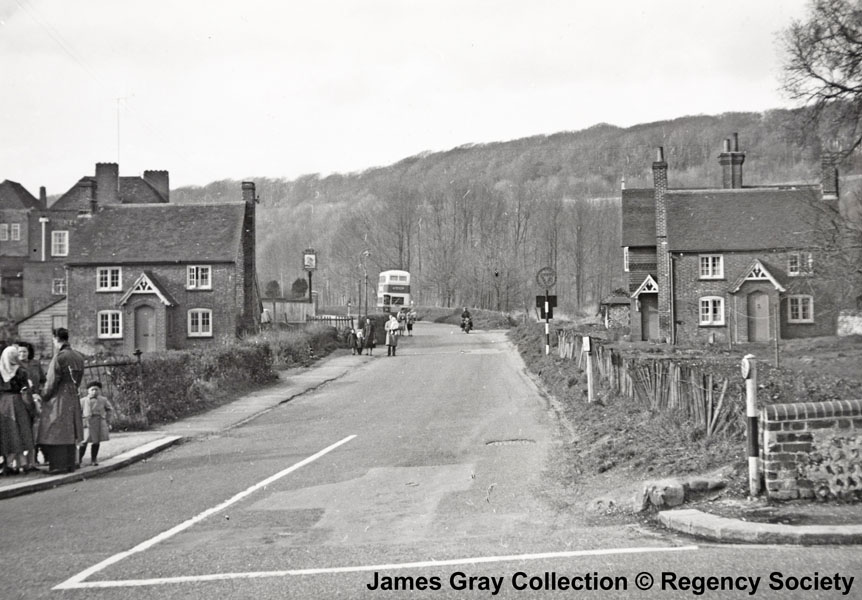
The bottom of Coldean Lane photographed in 1954 with a cottage on each side of the road looking like lodges at the entrance to an estate. The sign for the Hikers Rest is just visible to the left of the bus.
Coldean Development in the 1930s
The southern part of Coldean was developed first when Mr James on behalf of Sussex Estates Ltd purchased a total of 40 acres for £12,000 in 1933 and 1934. The land was to be used for building houses in Park Road, Coldean Lane, part of Ridgeview and part of West Drive now known as Rushlake Road. Part of The agreement also allowed for improvements to the southern end of Coldean Lane where it joins the Lewes Road.
At this time planning in this area was controlled by Chailey Rural District Council who were responsible for agreeing to the plan submitted by Mr James.
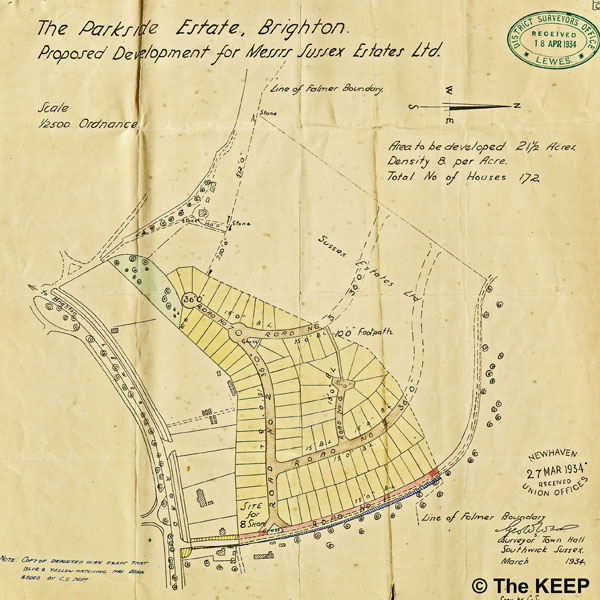
The plan above shows the proposed layout at the southern end of Coldean Lane. From the archives held at the Keep in Woollards Way.
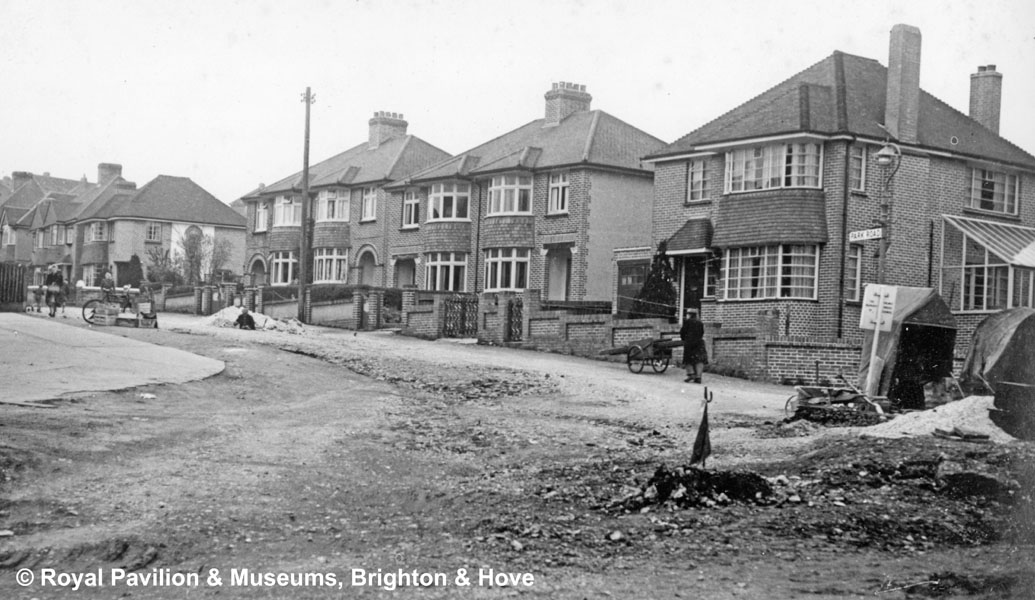
The photograph above was taken on 13 April 1951 and shows Park Road, Coldean when the road was not much better than a cart track.
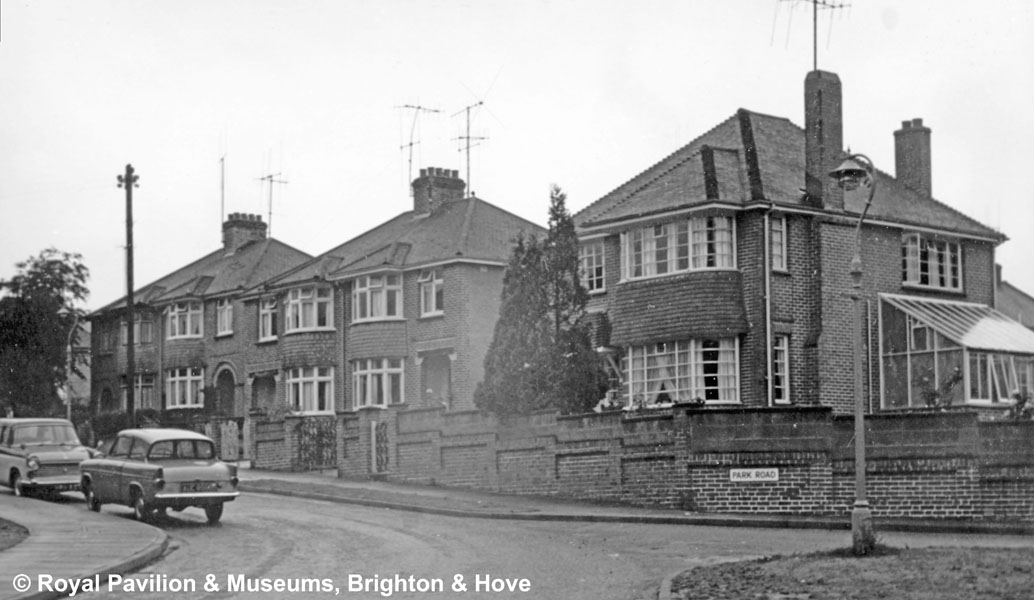
The picture above is a similar view taken in the 1960s after the road had been made up.
Plans were drawn up in 1935 for eight shops and four garages, at Coldean Lane on the Parkside Estate.
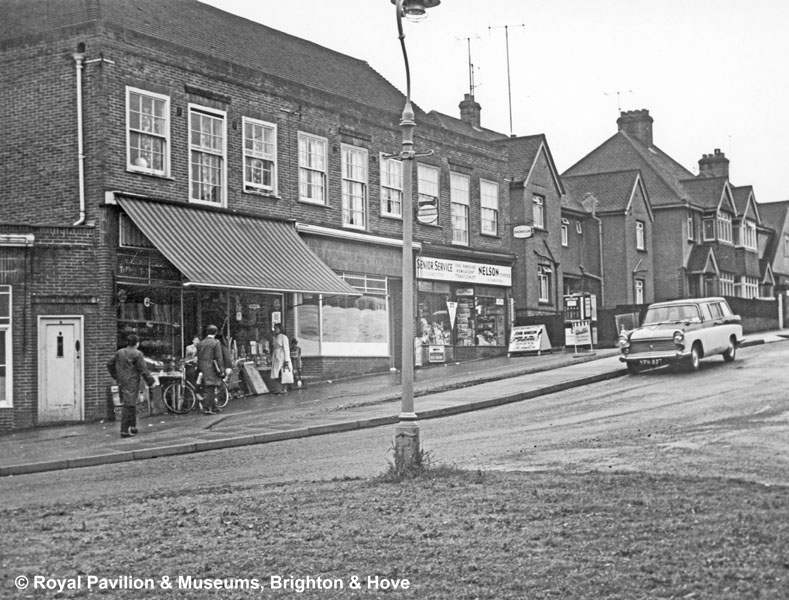
The photograph here shows the shops in Park Road in the 1960s. The Hikers Rest Public House is to the left of photograph. The Parkside Newsagent and Tobacconist shop is in centre of picture.
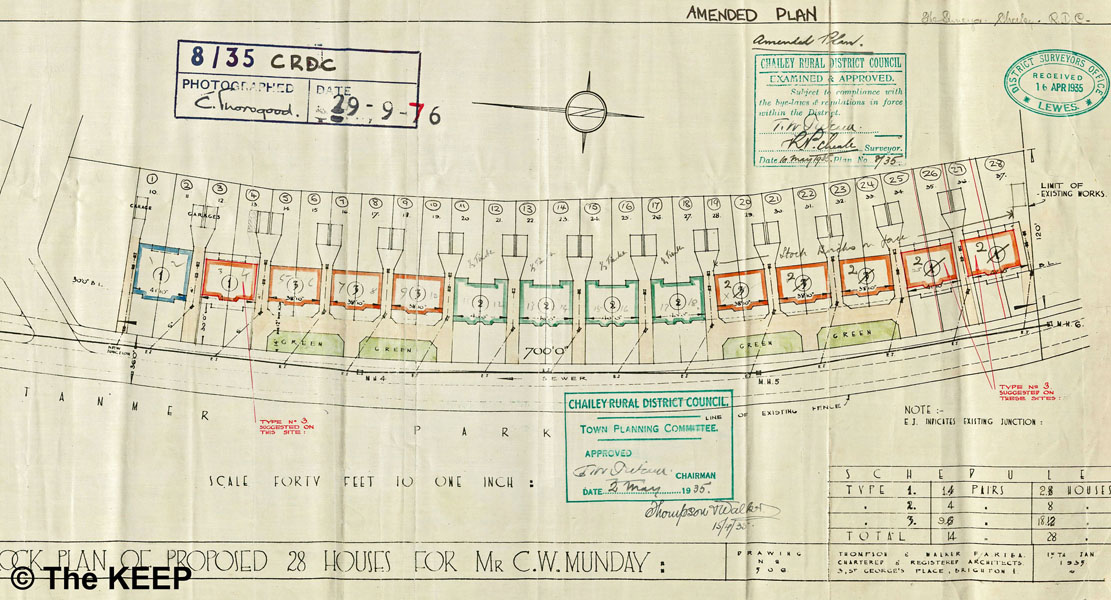
Plans for 28 houses in Coldean Lane were approved in 1935. There was a stipulation that these houses had to be built in a certain style setting a minimum price of £600 each.
The same stipulation applied to houses built in Park Road and West Drive.
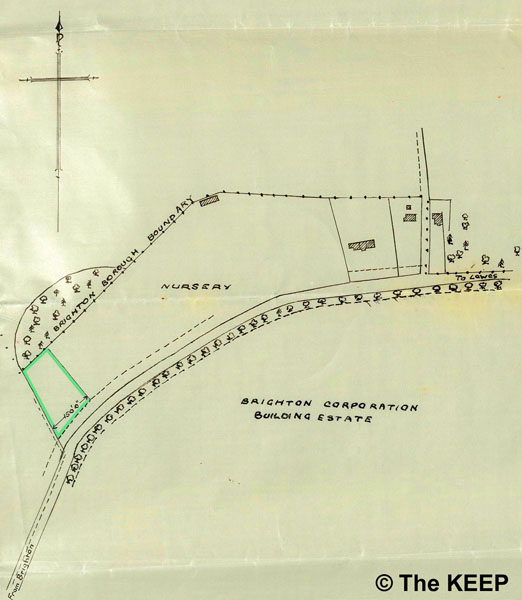
The first site for a Public House at Coldean.
Kemptown Brewery purchased a small piece of land at one end of the nursery which ran alongside the Lewes Road near Coldean Lane with the intention of building a public house on the site. This did not happen and the land was sold back to Brighton Borough Council in 1937. The site was 150 feet wide at the road side and is shown with a green edge on the plan above.
The Hikers Rest
Plans were drawn up by Denman and Son to build a public house near the bottom of Coldean Lane. John Denman was the architect who was also responsible for the conversion of the barn at the menagerie farm into a church.
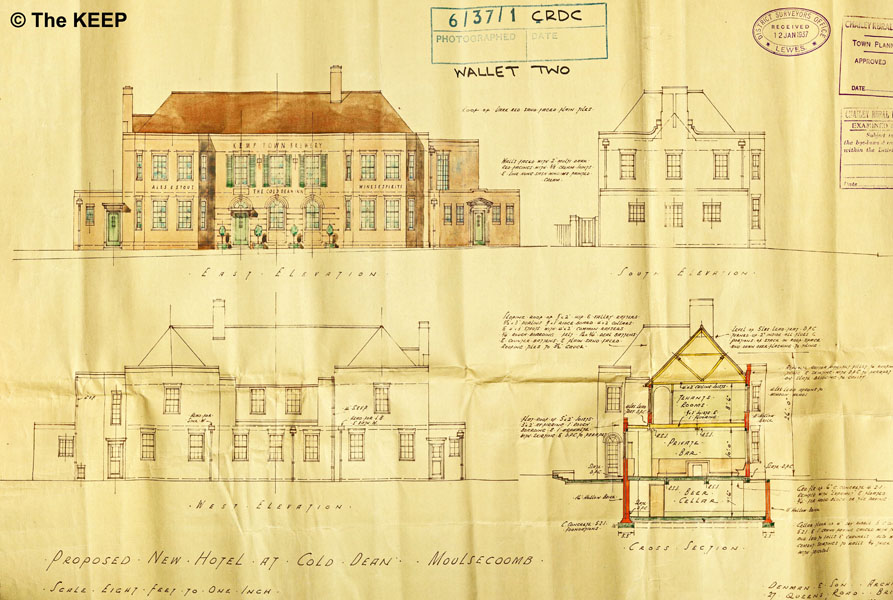
Exterior drawings for the new hotel to be built at Coldean dated January 1937.
The plans are from the Keep Archives at the East Sussex Records Office.
They were drawn up when the area was under the control of Chailey Rural District Council.
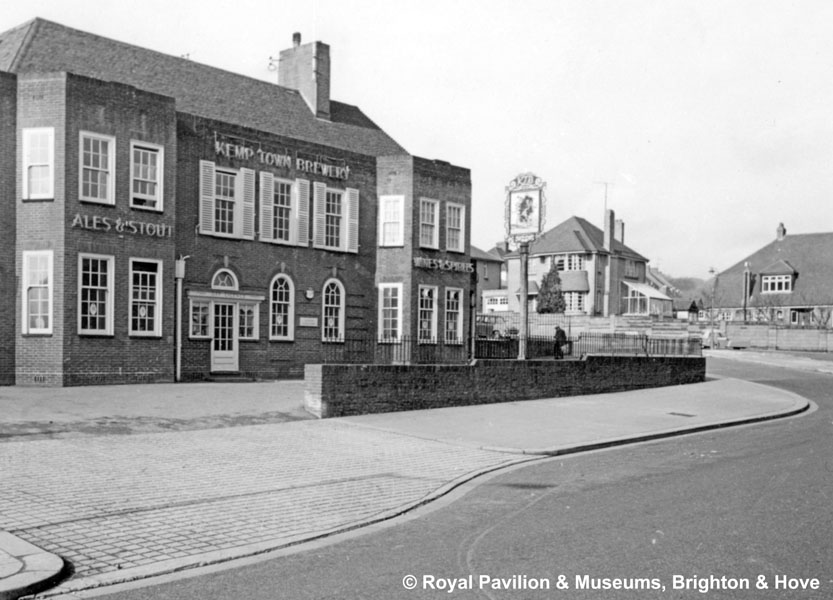
The Hikers Rest Public House at Coldean in the 1960s.
In 1950, the Corporation bought the rest of the land at Coldean; and the whole valley was brought within the Borough of Brighton on 1 April 1952 when, under the terms of the 1951 Brighton Extension Act, most of the territory covered by Falmer and Stanmer parishes was annexed.
The construction of houses and other facilities began after this. Churches, a school, a library and shops were all provided and regular bus services were started.
Coldean is characterised by low-density housing, much of it semi-detached and most now owner-occupied, with roads following the contours of the landscape. The deep valley, its steep sides mainly wooded and unsuitable for development, give the impression of an area isolated from the rest of Brighton and the area has the character of a quiet garden suburb.
